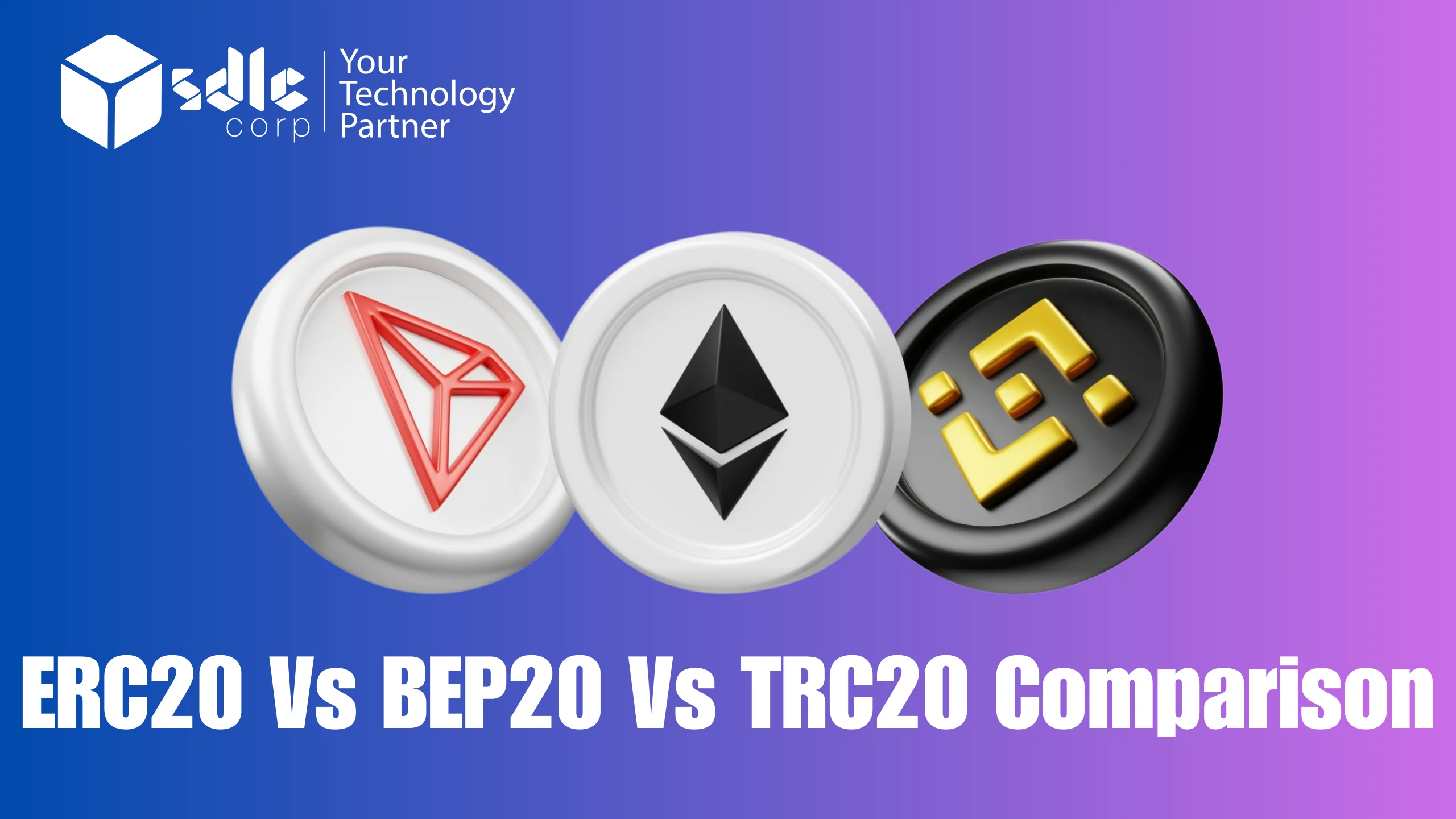When dealing with cryptocurrency tokens, you may have come across ERC20, BEP20, and TRC20. These are three of the most commonly used token standards on different blockchain networks, each serving unique purposes.
But what are the key differences between them? And which one should you use for your project? This guide breaks it down in a simple, easy-to-read format, ensuring you understand the fundamentals of ERC20, BEP20, and TRC20 tokens.
What Are Token Standards?
Token standards define a set of rules and functionalities that tokens must follow to be compatible with their respective blockchain networks. These standards ensure that:
- ✅ Tokens can be easily transferred.
- ✅ Smart contracts can interact with them.
- ✅ They work across wallets and exchanges.
ERC20: The Ethereum Standard
Overview
ERC20 is the most widely used token standard, built on the Ethereum blockchain. It was introduced in 2015 and has since become the foundation for thousands of tokens.
Key Features
- Secure and well-established.
- Compatible with Ethereum-based applications.
- Supports smart contracts and DeFi platforms.
Limitations
- 🚨 High gas fees due to Ethereum’s congestion.
- 🚨 Slower transaction speeds compared to newer blockchains.
Examples of ERC20 Tokens
- 🔹 USDT (Tether)
- 🔹 UNI (Uniswap)
- 🔹 LINK (Chainlink)
BEP20: The Binance Smart Chain Standard
Overview
BEP20 is the token standard for the Binance Smart Chain (BSC), designed to offer faster and cheaper transactions than ERC20.
Key Features
- Low transaction fees compared to Ethereum.
- High-speed transactions.
- Fully compatible with the Binance ecosystem.
Limitations
- 🚨 More centralized than Ethereum.
- 🚨 Security risks due to frequent scams and rug pulls.
Examples of BEP20 Tokens
- 🔹 BNB (Binance Coin)
- 🔹 CAKE (PancakeSwap)
- 🔹 BAKE (BakerySwap)
TRC20: The Tron Standard
Overview
TRC20 is the token standard for the Tron blockchain, designed for fast and low-cost transactions.
Key Features
- Zero or minimal transaction fees.
- High scalability (supports thousands of transactions per second).
- Fully compatible with Tron-based applications.
Limitations
- 🚨 Less decentralized compared to Ethereum.
- 🚨 Limited adoption compared to ERC20 and BEP20.
Examples of TRC20 Tokens
- 🔹 USDT (Tether on Tron)
- 🔹 WIN (WinkLink)
- 🔹 JST (JUST)
Comparison Table: ERC20 vs BEP20 vs TRC20
| Feature | ERC20 (Ethereum) | BEP20 (Binance Smart Chain) | TRC20 (Tron) |
|---|---|---|---|
| Speed | Slow | Fast | Very Fast |
| Transaction Fees | High Gas Fees | Low Fees | Near-Zero Fees |
| Security | Very Secure | Moderate Security | Moderate Security |
| Scalability | Limited | High | Very High |
| Decentralization | Highly Decentralized | Less Decentralized | Moderately Decentralized |
| Smart Contracts | Yes | Yes | Yes |
| Network Support | Widely Adopted | Growing Rapidly | Increasing Adoption |
| Use Cases | DeFi, NFTs, DApps | DeFi, Gaming, Utility | Payments, DeFi |
Which One Should You Choose?
- ✅ Choose ERC20 if security, decentralization, and wide adoption are your priorities.
- ✅ Choose BEP20 if you need faster, cheaper transactions and access to Binance’s ecosystem.
- ✅ Choose TRC20 if you need ultra-low fees and high-speed transfers.
Conclusion
Choosing the right token standard depends on your project’s goals, security needs, and cost considerations. Whether you are building DeFi applications, NFT platforms, or payment solutions, selecting the correct blockchain standard is crucial.
For expert guidance in Token Development Services and Blockchain Development Company solutions, explore our professional services to launch secure, scalable, and efficient tokens.
🚀 Ready to create your token? Get started today!















